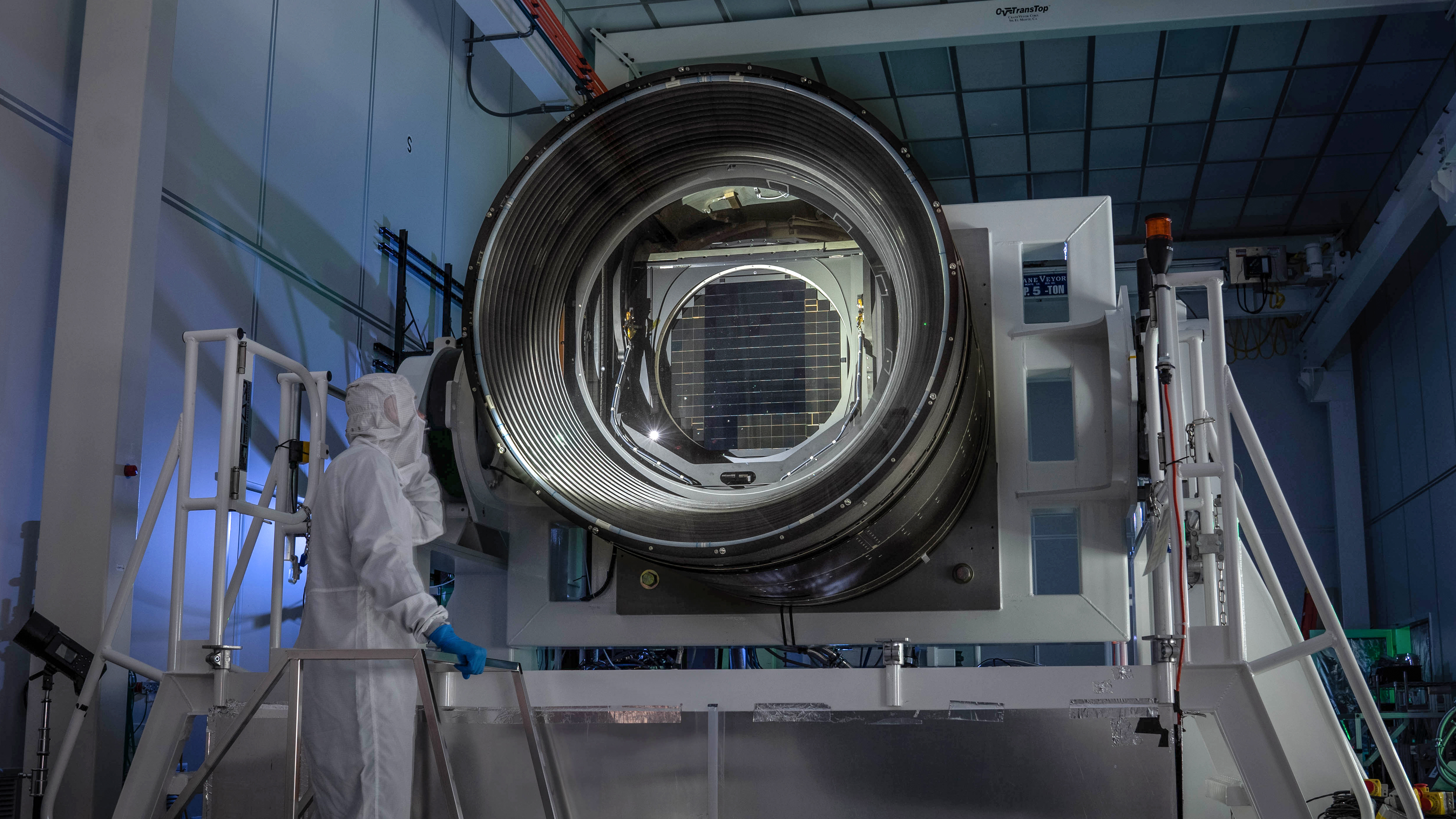
The world's biggest camera, fitted with the world's biggest lens, is now ready to use. The culmination of a 20 year project, the Legacy Survey of Space and Time (LSST) camera is destined to be used at the new Vera C Rubin Observatory in Chile. When installed, it will shoot 1000 3,200 megapixel photographs every night for ten years.
The camera, which weighs three tons and is the size of a small car, has been built at the SLAC National Accelerator Laboratory at Stanford University, California. The front of the lens measures over five feet (1.57m) across. The focal plane is made up of 201 individual custom-designed CCD sensors, and it is so flat that it varies by no more than a tenth the width of a human hair. The pixels themselves are 10 microns wide.

"Its images are so detailed that it could resolve a golf ball from around 15 miles away, while covering a swath of the sky seven times wider than the full moon," explains SLAC professor and Rubin Observatory Deputy Director and Camera Program Lead Aaron Roodman. "These images with billions of stars and galaxies will help unlock the secrets of the universe.” Scientists aim to use the camera to discover more about dark matter and dark energy, and to explore the Milky Way.
The LSST will now be transported from the USA to the Andes, where it will be used in conjunction with the Simonyi Survey Telescope within the Vera C Rubin Observatory, situated on 8,900-foot-high Cerro Pachón mountain, about 285 miles (460 km) north of Santiago.







